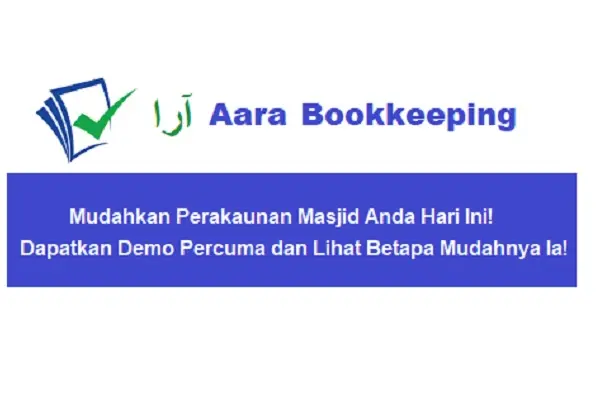[ads key="VRCC81YKXCR2" enable_lazy_loading="no"][/ads]
In Islamic tradition, waqf (endowment) plays a crucial role in supporting mosques, schools, and charitable activities. When a masjid receives a waqf asset like a building, proper accounting ensures transparency and honors the sacred trust of the donation. Let’s explore how a masjid might record and manage a waqf building, using the example of a 3-storey property donated by Haji Mohamad Toni.
[ads key="NKZL7AWDCNU4" enable_lazy_loading="no"][/ads]
The Example: A 3-Storey Building Donated by Haji Mohamad Toni
Haji Mohamad Toni has donated a 3-storey building to a local masjid with the intent that the building's income will support the masjid’s activities. The building has a market value of MYR 2.0 million and is expected to generate monthly rental income. Here’s how the masjid can account for this valuable gift, ensuring both compliance with accounting standards and adherence to waqf principles.
Step 1: Initial Recording of the Waqf Building Donation
When a masjid receives a building as a waqf asset, it is recorded on the balance sheet as a fixed asset. This entry doesn’t impact the Income & Expenses statement directly, as it’s a non-operating asset donation rather than cash revenue.
Example Entry:
- On the date of the donation:
Debit: Fixed Assets - Waqf Building MYR 2,000,000
Credit: Waqf Fund (or Waqf Reserves) MYR 2,000,000
This entry records the building’s value as a fixed asset while crediting it to a restricted fund, ensuring it doesn’t affect the masjid’s regular operational revenue.

Source : AaraBookkeeping
[ads key="AOK6LKVWT5R5" enable_lazy_loading="no"][/ads]
Step 2: Monthly Rental Income from the Waqf Building
Haji Mohamad Toni’s building generates MYR 10,000 in monthly rental income for the masjid. This rental income, known as hasil harta waqf, is restricted to waqf-approved uses and should be tracked separately in the Income & Expenses statement.
- Each month, the rental income is recorded as follows:
Debit: Cash/Bank MYR 10,000
Credit: Waqf Income - Rental MYR 10,000
This entry captures the rental cash inflow from the building and designates it as waqf income. The masjid can use this income to fund maintenance or other approved projects, as per waqf conditions.

Source : AaraBookkeeping
[ads key="GVGIQTNET9WA" enable_lazy_loading="no"][/ads]
Step 3: Maintenance Expenses for the Waqf Building
As with any property, upkeep is essential. Suppose the masjid spends MYR 500 on a minor repair for the building. This expense should be recorded under a specific waqf expense category in the Income & Expenses statement. Recording it separately helps track all financial activity associated with the waqf building.
- Example Entry for Maintenance Expense:
Debit: Waqf Expenses - Building Maintenance MYR 500
Credit: Cash/Bank MYR 500
This entry records the minor repair cost under waqf expenses. By maintaining a separate expense category, the masjid ensures transparent accounting for waqf-related costs.

Source : AaraBookkeeping
[ads key="WXG0XR0JQWBZ" enable_lazy_loading="no"][/ads]
End-of-Year Financial Reporting and Transparency
At the end of each financial year, the masjid should report all waqf-related income, expenses, and asset valuations separately to maintain transparency. Here’s how this might look:
1. Balance Sheet:
- The waqf building appears as a fixed asset at its fair market value of MYR 2.0 million.
- The waqf donation is credited to Waqf Fund or Waqf Reserves, showing the total value of restricted assets the masjid holds.
2. Income & Expenses Statement:
- Waqf Income: MYR 10,000 per month (totaling MYR 40,000 from rental).
- Waqf Expenses: Any maintenance or repair costs, such as the MYR 500 repair in this example.
This level of reporting allows the masjid to demonstrate responsible stewardship over waqf assets, offering transparency to donors, community members, and regulators.
[ads key="8FCVXHPJY9BI" enable_lazy_loading="no"][/ads]
Conclusion
Recording and managing waqf assets like the building donated by Haji Mohamad Toni requires thoughtful accounting practices. By properly categorizing the initial asset donation, monthly rental income, and related expenses, the masjid can ensure full compliance with waqf principles and build community trust. Accurate and transparent accounting for waqf supports the sustainability of charitable initiatives, allowing masjids to continue their vital work in serving the community.
This example highlights the importance of clear financial practices in maintaining the integrity of waqf donations. The masjid not only honors the donor’s wishes but also upholds a trust that extends to the entire community.

Comments (0)